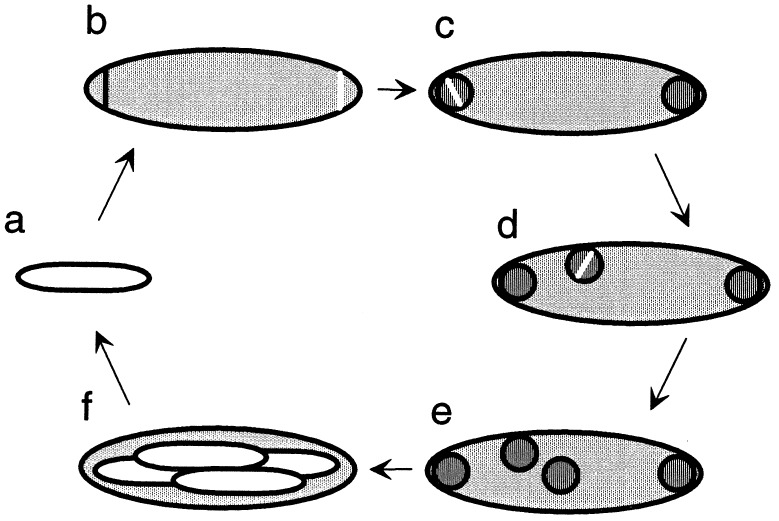Figure 4.
Sporulation and the life cycle of M. polyspora. As an endospore (a) germinates, the emerging bacterium often shows signs of the initiation of the next round of sporulation. (b) Two forespores are formed by the production of two asymmetrically positioned septa, one near each cell pole. This septation is mediated by the cell division protein FtsZ, shown here as a white line spanning a membrane-bound compartment (see also Fig. 2). (c) A newly engulfed forespore may undergo fission. (d) Forespore fission can also occur later, after a forespore has migrated to a lateral position within the mother cell. (e) The forespores enlarge and develop into mature, phase-bright endospores (f).

